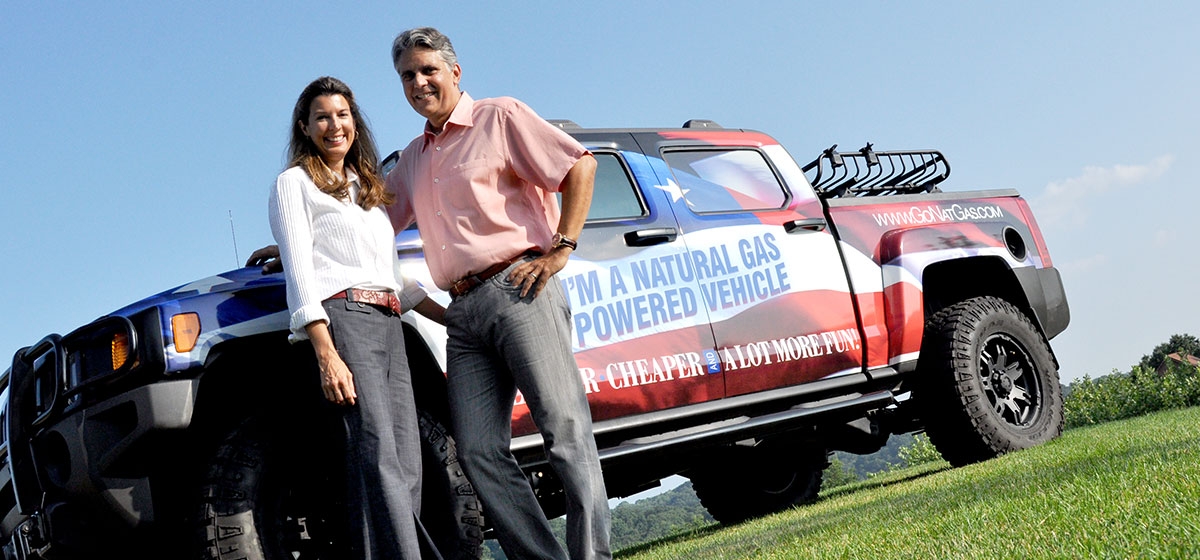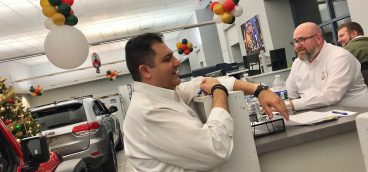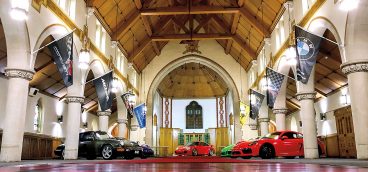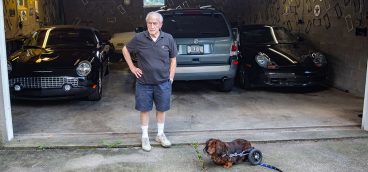
In May, my wife, Cindy, and I became the first Americans to drive from coast-to-coast in a natural-gas-powered vehicle. The idea first occurred to me last fall after retiring from EQT. I had the time, and the project intrigued me.
First, I’m a believer in energy independence for America. We import more than 65 percent of our oil from the Middle East and Russia—places not known for their political stability. And at $4 a gallon, gasoline is so expensive that many people have to choose between filling their tanks and buying necessary goods. Finally, as importers of fuel rather than exporters, we’re losing out on good jobs we could create here.
I’m also a geologist, and I’ve spent my career in the natural-gas industry. So, I have a definite point of view, but I believe it’s one based in experience. America holds more than a 200-year supply of natural gas. We use it now primarily for heating and cooking, but natural gas is also perfectly suited for use as a car fuel. Europeans and Asians use it in cars and commercial vehicles, simply pulling up to a gas station and pumping natural gas. And some American cities use natural gas for taxis and municipal and school buses. At the equivalent of about $1.50 a gallon, they’re saving thousands of dollars; studies show that an American family could save over $2,500 a year by switching to a natural gas vehicle (NGV).
Why hasn’t it caught on here? We’ve focused on hybrid and dedicated electric cars, and these aren’t bad choices. But they aren’t ideal for everyone. Electric cars require lithium batteries; lithium is scarce in America (we purchase most of it from Bolivia) and we see no energy security advantage in transferring our unsustainable dependency to any other country. Further, batteries can’t support larger vehicles, and you have to recharge an electric car roughly every 100 miles. Finally, the hard truth is that, although technology may change it in the future, most of these “clean” cars receive their electricity from coal plants and are, essentially, coal-fired vehicles.
What if we switched to NGVs? They’re cleaner, certified by the EPA as producing lower emissions than any other car; they’re cheaper; and they’re a lot more fun, you don’t have to drive a tiny car. We could create high-paying American jobs in natural gas production and transmission, as well as collateral jobs when the industry expands. Natural gas isn’t renewable, but it’s a multi-century alternative as we continue to explore other energy options. Believing in the value of this message, I thought, “what better way of spreading it than to taking to the streets?”
Choosing the vehicle was a big first step. I found a Hummer H3 in Utah that had been converted to run exclusively on natural gas. (The conversion process is easy and can be done by a trained mechanic.) It had two huge fuel tanks, with a 500-mile driving range. Most NGVs have ranges similar to regular cars. This Hummer had been used as a mobile re-fueler for other cars, and we’d need the capacity to make it across the West Texas desert, where it was almost 400 miles between stations. Finally, as a nice touch, our Hummer was EPA-certified as having fewer emissions than a Smart car. We liked the irony of a clean Hummer, compared with its image as the quintessential “dirty car.”
It would be an educational venture, entirely self-funded—no corporate sponsors or financial agendas. Showing people alternatives to their current transportation would be sufficient reward. After all, horse-and-buggy riders never believed a Model T Ford could make it across the country until someone did it.
I thought we’d make it across, but I wasn’t sure. There are only about 950 natural-gas stations in a country of almost 3.8 million square miles. Many are in Western states, where NGVs are becoming more popular. And some stations are private, serving only fleet vehicles. We were determined to use only public-access stations, but that was a tough proposition. Many states don’t have any. So we planned our route, as Elmer Fudd used to say, very carefully.
Clearly, people have strong opinions—pro and con—about drilling for natural gas. As an employment lawyer who has represented western Pennsylvania workers and labor unions for 20 years, Cindy insisted on researching the topic before signing on. She watched “Gasland,” the anti-drilling documentary, read media accounts, and talked to a lot of people. She came away feeling that both sides have some trouble with objectivity, including relying on skewed data. Her ultimate view is that when done properly, the extraction of natural gas is safe for people and the environment. Having said that, no type of manufacturing industry is hazard-free, and we agreed to talk candidly with drilling opponents as part of the trip.
Just before we left, President Obama endorsed NGVs during a March 30 speech at Georgetown University, saying “The potential for natural gas is enormous… Last year, more than 150 members of Congress from both sides of the aisle produced legislation providing incentives to use clean-burning natural gas in our vehicles instead of oil. And that’s a big deal.”
With the logistics sorted out, we finally hit the road. We made a total of 14 city stops in 15 days, beginning in Santa Monica and traveling through Palm Springs, Phoenix, Tucson, Las Cruces, Midland, Fort Worth, Oklahoma City, Kansas City, St. Louis, Indianapolis, Columbus, Pittsburgh, Washington, D.C., and ending in Staten Island. We ate lots of local food, listened to the blues on XM radio, and, when we weren’t driving or re-fueling, we gave interviews and met with local officials.
One group in particular, the Clean Cities organization (cleancities.org), gave us a great welcome everywhere they could. They organized breakfasts, sponsored media events and generally promoted our trip. In Washington, D.C., we met with U.S. Sen. Bob Casey and U.S. Rep. Jason Altmire, and both visited our red, white and blue Hummer outside their offices. We told them we supported the pending Natural Gas Act, which would provide incentives to build natural gas fueling stations and to purchase NGVs.
We also visited 10 middle schools, where more than 90 percent of the students had family incomes at the federal poverty level. We told students about NGVs and showed them the car. We also made donations to each school’s science program. Spending time with the middle schoolers was a highlight of the trip. They asked insightful questions, including whether we could expect the price of natural gas to reach the price of gasoline as more people started using it. We said it was possible, though unlikely, given the huge supply.
We were a little saddened by some questions, such as whether the gas tanks would explode if shot by a bullet. We assured them that NGVs are actually less flammable than gasoline cars due to the tank material and the vaporous nature of the fuel. One of our favorite schools was Pittsburgh’s Arsenal Middle School, where the kids were proud of our car’s local connection.
We talked to Americans on the street, in parking lots, outside schools—anywhere they saw our painted Hummer and started asking questions. We were struck by their common concerns. Like Pittsburghers, they were troubled by a lack of good jobs, rising fuel costs and environmental quality. And, frankly, this made us glad we were making the effort to be a small part of the solution. Almost everyone we met said they wanted an NGV as their next car.
As we came though the Fort Pitt Tunnel in our final push toward home, we were very tired, but very satisfied. We had completed the trip, but we also got people thinking. America remains the land of opportunity. We believe in the power of each person to make a difference for future generations. We haven’t decided what our next natural-gas adventure will be—maybe a cross-country road race? In the meantime, look for our patriotic Hummer on the streets of Pittsburgh. We’d love to say hello.




